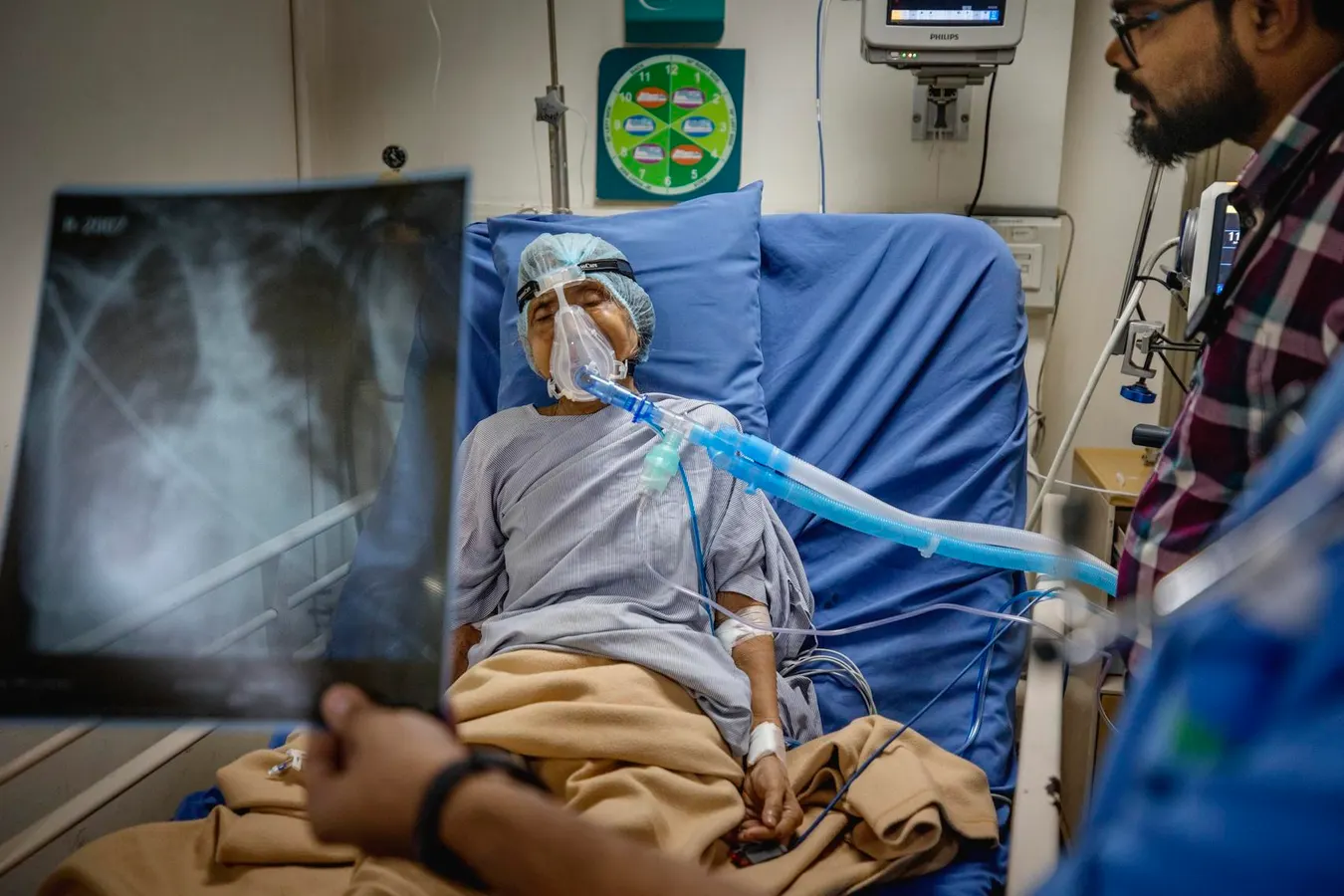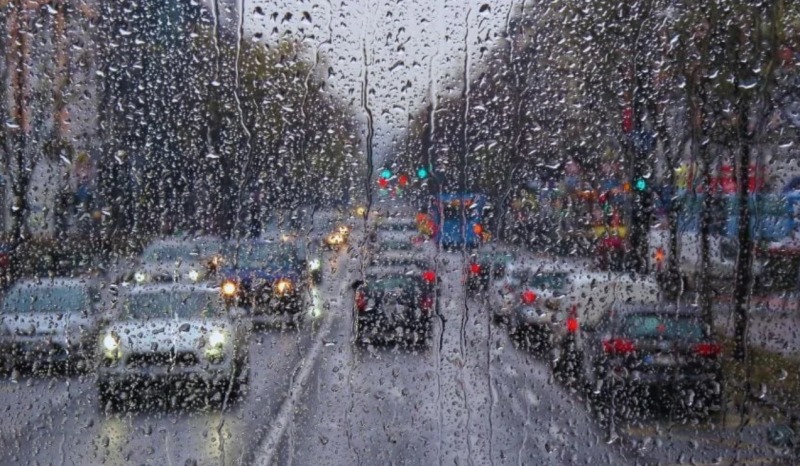
For years I did lung surgery most every day of the week. When I opened a patient’s chest to operate on a lung, I’d look between the spread ribs, and the truth of our environment would be right there before me.
I often saw lungs blackened by years of inhaled carbon particles. I saw the pleural surface covered with blebs and bullae caused by the particulate matter and oxidants of cigarette smoke. I felt the tumors that grew where once healthy cells resided. The damage was not abstract. It was visceral. It was permanent. And often, it was preventable.
That same type of damage—the scarring, the inflammation, the cancer so apparent to me in the operating room—is now being accelerated by a changing climate that magnifies the pollution we breathe every day. I observed this in the operating suite, but to better understand what lies beneath those observations, it helps to follow the path of a single inhaled breath.
The Journey of a Particle
Imagine it’s a sweltering day, possibly smoggy or smoke-filled. You take a breath, and a speck of fine particulate matter (the dust, soot, and smoke in the air made up of particles so small you cannot see them — what scientists call PM2.5) slips in. Smaller than one thirtieth the width of a human hair, it bypasses the usual defenses of your nose and throat. The mucus and cilia that normally trap larger dust cannot catch it.
It drifts down the windpipe (the trachea) and into the branching bronchi. Here, the lining cells sense an invader and release alarms, chemical signals that draw in immune cells and generate oxidative stress. That irritation makes the airway more twitchy, more inflamed and prone to narrow. For a person with asthma or COPD (Chronic Obstructive Pulmonary Disease, or bronchitis and emphysema), this means coughing, wheezing, or a feeling of suffocation, or even a trip to the emergency room.
MORE FOR YOU
The invading particle does not stop there. It travels on down through the smaller airways or bronchioles, all the way to the alveoli, the tiny air sacs where oxygen moves into the blood. The alveolar wall is only one cell thick. It is built for gas exchange, not for filtering poisons. When the particle deposits here, protective alveolar macrophages rush to engulf it. In the process, they release cytokines and free radicals, setting off more inflammation. Some particles overwhelm these natural defenses. The smallest, what are called ultrafine particles, even slip through the alveolar capillary barrier itself, crossing into the bloodstream, and from there travel throughout the body, including to the heart, the brain, and the kidneys to initiate even more destruction and disease (see below).
Acute and Chronic Damage
In the short term, this cascade means tighter and more restricted airways, more mucus, and overall reduced lung function. That is why hospitalizations rise on bad air days. But the long-term story is more insidious.
In people with COPD (about 16 million diagnosed Americans, and in reality a multiple of that), repeated particle deposition drives permanent scarring and remodeling of the bronchi, worsening obstruction of air-flow and oxygen delivery, and accelerating the decline of lung function. In asthma (about 20 million adult Americans and 4.7 million children), particles amplify allergic inflammation, lowering the threshold for an attack. And in the context of lung cancer (over 200,000 new cases annually in the United States), the story is stark: particles generate DNA damage and mutations. The World Health Organization’s International Agency for Research on Cancer has declared outdoor air pollution and particulate matter Group 1 carcinogens, proven causes of lung cancer.
This is precisely what underlies what I saw as a surgeon each day as I opened the patient’s chest. Lungs stiff with scar tissue. Airways clogged with carbon deposits. Tumors growing where chronic injury has hijacked DNA repair and allowed malignant cells to escape control.
Pollution Does Not Stay in the Lungs
Once particles cross into the bloodstream, they cause systemic inflammation throughout the body. We can measure this in elevated C reactive protein levels. This systemic response in turn accelerates atherosclerosis, or “hardening of the arteries,” raising the risk of heart attack and stroke. Some ultrafine particles even reach the brain, where they have been detected in human tissue and shown in animal models to travel along the olfactory nerve. Numerous studies have shown that long-term exposure to air pollution from car exhausts, wildfires and factory fumes is linked with increased risks of developing neurodegenerative illnesses, including Parkinson’s disease with dementia. I will elaborate in future articles the extensive impact pollution has on other organ systems.
So How Does the Changing Climate Play into All this?
The changing climate amplifies the pollution, and thus the pollution’s impact on human health.
Hotter days (remember, last year 2024 was the hottest in recorded history) accelerate the chemical reactions that create ground level ozone, a powerful respiratory irritant that makes airways constrict and inflame. Moreover, stagnant air during heat waves traps pollutants close to the ground, creating prolonged bad air events. And then there are the wildfires, fueled by hotter and drier conditions, which are now sending massive plumes of smoke across entire continents, spiking emergency visits in places far from the flames. In addition, warmer seasons lengthen pollen cycles and increase pollen counts, priming lungs for more asthma episodes and more allergy attacks.
The changing climate is not separate from pollution. It is an engine that makes the particulate impact throughout the respiratory system worse—more ozone, more smoke, more allergens—and therefore the changing climate is a direct driver of many if not most of the lung diseases I regularly treated as a thoracic specialist in the operating room and in the intensive care unit.
Why All This Matters to You
I describe this journey of a single particle because it makes clear how personal and immediate the problem is. This is not rocket science; it’s basic biology. And this is not about 10 years from now. It is not about polar ice or disappearing far off islands. It’s about the here and now, and it’s about you and me. It is about the air we breathe, the lungs in our chests, the health of our children and grandparents. Every breath on a polluted, overheated day carries the possibility of inflammation, scarring, and long-term debilitating disease.
As a surgeon, I can resect a cancer or transplant a new lung, but prevention as we all know is more powerful than any scalpel. Understanding that climate change and pollution are two sides of the same coin, and that both directly harm our lungs is essential if we are to protect health and formulate appropriate policy for the decades to come.
Each of us takes about twenty thousand breaths every single day—twenty thousand chances for the air around us to either sustain life or to quietly harm it. Breath by breath, particle by particle, the changing climate is writing itself into our bodies.



